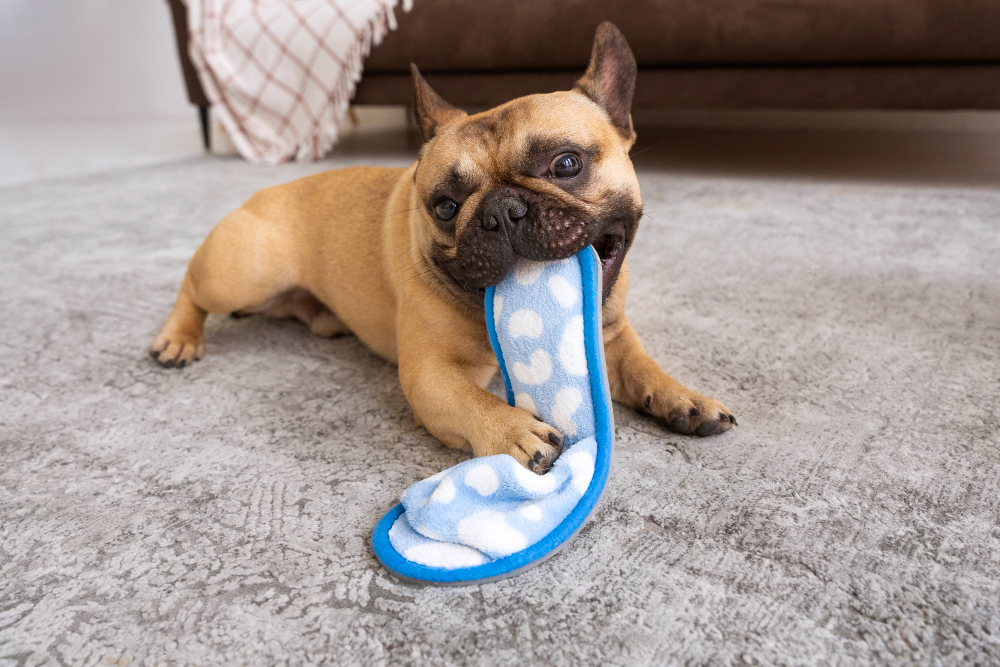
You are out for a walk with your furry friend on a breezy evening. You notice that your pup is not walking normally.
Do you know why that is happening?
This is happening because you are not taking good care of your dog's paw pads. How to care for dog paw pads is a question that perplexes most dog owners.
If you are one of them, we are here to help you.
But before we discuss how to care for dog pads, it's essential to understand what dog paw pads are and which dog grooming accessories you need.
So let's dig in.
What Are Dog Paws?
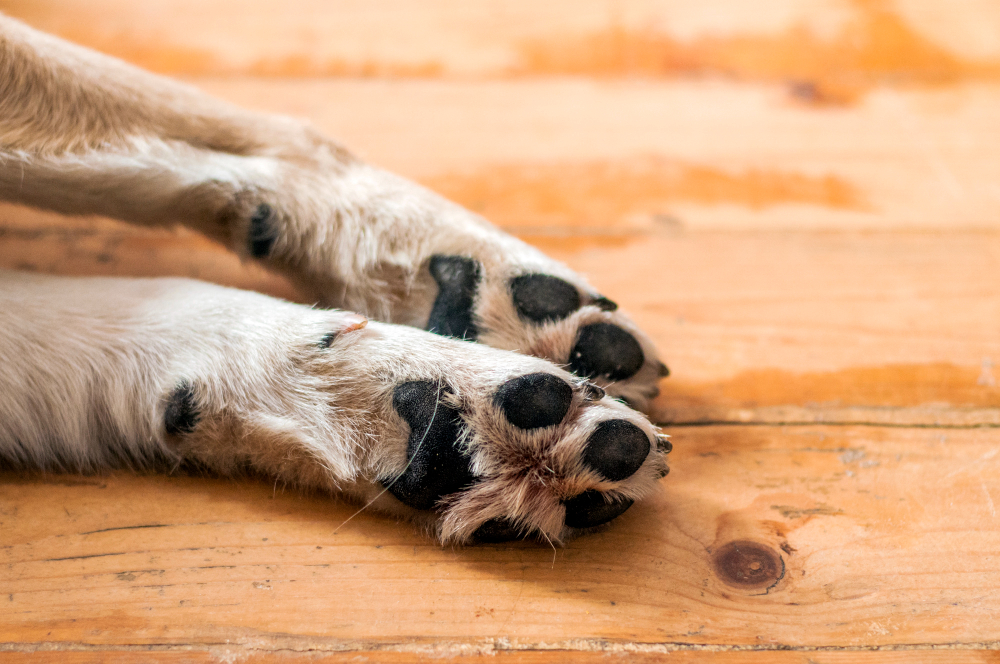
Dog paws are the padded and clawed feet of dogs. Dog paws provide cushioning, traction, and stability when walking, running, or jumping.
The paw is made up of several parts:
- The paw pads (the tough, cushiony part of the foot that makes contact with the ground).
- The nails (also known as claws).
- The digital and carpal pads (smaller pads on the underside of the paw).
A dog's paw also contains sensory receptors that provide information about the environment, such as temperature, texture, and pressure. Dogs also have sweat glands in their paw pads that help regulate their body temperature. Dog paws also have scent glands that leave behind the dog's unique odor as they walk.
A dog's paws are an essential part of its anatomy that help it navigate its surroundings and engage in various activities.
Here are all the parts of dog paws that you need to be aware of:
1) Digital Pads
Digital pads are small, oval-shaped pads located on the underside of a dog's paw, just below the toes. Dogs have four digital pads on each paw, one for each toe. They are made up of thick, tough skin that provides cushioning and protection.
The digital pads help distribute the weight of the dog's body when they walk or run. They also help provide traction and stability on various surfaces.
2) Claws
Claws, also known as nails, are hard, keratinized structures that grow from the tips of a dog's toes.
Most dogs have four claws on their rear paws and five on their front paws. The number of claws depends on the dog breed.
The claws serve various functions, including providing traction when walking or running, digging into the ground or other surfaces, grasping and holding objects, and defending themselves against attackers.
Keeping your dog's claws trimmed is essential to prevent them from becoming overgrown and causing discomfort or injury. Overgrown claws can also affect a dog's gait and cause them to walk abnormally.
A veterinarian or groomer can help trim a dog's claws safely and effectively. You can also learn to do it yourself with proper instruction and tools.
3) Dewclaws
Dewclaws are additional, often smaller claws located on the inside of a dog's front or hind legs. This is usually above the paw and a few inches up from the ground. Dewclaws are often referred to as "thumbs" or "toes" and are similar to a dog's other claws in structure and composition.
While dewclaws are present in many dog breeds, they may not serve a functional purpose. They can be removed for various reasons, such as to prevent injury or to conform to breed standards.
In some breeds, however, dewclaws are essential for specific tasks, such as helping a dog climb or providing additional grip during hunting or herding.
If a dog has dewclaws, keeping them trimmed like their other claws is essential. This will help prevent them from becoming overgrown and causing discomfort or injury. Some dogs may also need their dewclaws removed if injured or infected.
4) Carpal Pad
The carpal pad, or the stopper pad, is a small, thick pad of tissue on the underside of a dog's wrist or carpus. The carpal pad comprises tough, durable skin, absorbs shock and provides traction during movement.
The carpal pad helps dogs maintain their footing and balance when walking, running, or jumping. In addition to this, carpal pads protect against wrist injury. The carpal pad works in conjunction with the larger paw pad and the smaller digital pads on the underside of a dog's paw.
Although the carpal pad is not as well known as the paw pad or the digital pads, it is an integral part of a dog's anatomy. The carpal pad plays a role in their mobility and physical comfort.
Like the other pads on dogs paws, the carpal pad should be kept clean and debris-free to prevent infection or injury.
5) Metacarpal Pad
The metacarpal and metatarsal pads are the larger, cushioned pads on the underside of a dog's paw, located just above the carpal and tarsal pads. The metacarpal pad is on the front paws, while the metatarsal pad is on the hind paws.
These pads are sometimes called the "heel" of the paw and help absorb shock. The metacarpal pad also provides cushioning while the dog is walking, running, or jumping. The metacarpal and metatarsal pads also aid in distributing the weight of the dog's body evenly across the paw. This helps prevent injury and strain on the joints or bones.
Like the carpal and digital pads, the metacarpal and metatarsal pads contain sweat and scent glands. This ultimately helps dogs mark their territory and communicate with other dogs.
Keeping these pads clean and debris-free is essential for preventing infection and maintaining good foot health in dogs.
Caring For Paw Pads In Summer
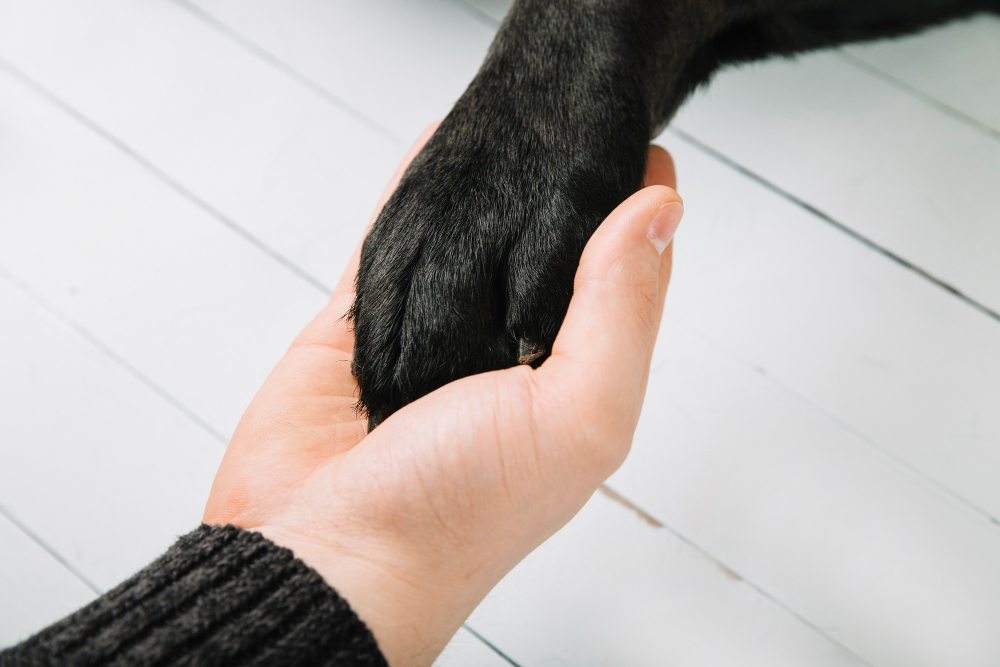
Dog paw pads are essential when it comes to grooming. Caring for your dog's paw pads in the summer is important because hot pavement, sand, or other surfaces can cause paw pad burns, blisters, and other injuries. Pet owners can participate in paw care for dogs.
-
Avoid hot surfaces
When possible, avoid walking your dog on hot pavement or sand during the hottest parts of the day. If you need to walk your dog on hot surfaces, consider using dog booties or paw wax to protect their paw pads. -
Keep your dog hydrated
Ensure your dog has access to plenty of fresh water, especially during the hot summer months. Staying hydrated helps maintain healthy paw pads. -
Check paw pads regularly
Check your dog's paw pads regularly for signs of injury, such as cuts, blisters, or burns. If you notice any injuries, clean them with an antiseptic solution. Afterward, apply a dog-safe ointment to promote healing. -
Trim nails regularly
Trimming your dog's nails can help prevent paw pad injuries and promote healthy foot structure. -
Consider paw wax or balms
Many paw waxes and balms are available that can help protect your dog's paw pads from hot surfaces and other environmental factors. These products can also help soothe and moisturize dry or cracked paw pads.
Caring For Dog's Paw Pads In Winter
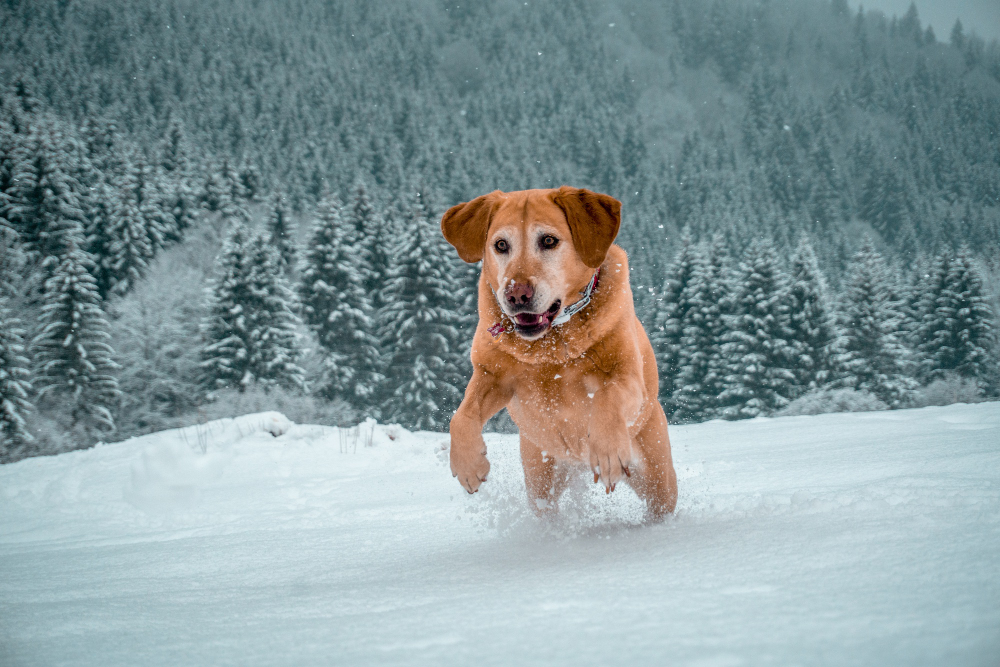
Wondering how to protect dog paws in winter?
Caring for your dog's paw pads in the winter is just as important because cold temperatures, snow, ice, and salt can cause paw pad injuries and irritation.
Here are some tips and tricks for caring for your dog's paw pads in the winter:
-
Avoid cold surfaces
Avoid walking your dog on cold, icy, or snowy surfaces when possible. If you need to walk your dog on these surfaces, consider using dog booties or paw pad wax to protect their paw pads.
-
Clean paw pads regularly
Snow and ice can cause irritation and dryness to your dog's paw pads. Clean your dog's paws after each walk to remove any debris or salt and to help prevent irritation.
-
Moisturize paw pads
Applying a dog-safe moisturizing balm or paw wax can help prevent dryness and cracking of your dog's paw pads. It's essential to moisturize paw pads after cleaning them.
-
Trim hair and nails
Trimming the hair between your dog's toes and keeping nails trimmed can help prevent snow and ice buildup. Thus reducing the risk of injury or irritation.
-
Be aware of signs of injury
Check your dog's paw pads regularly for signs of injury, such as cracks, cuts, or bleeding. If you notice any injuries, clean them with an antiseptic solution and apply a dog-safe ointment to promote healing.
Caring for your dog's paw pads in the winter requires extra attention and effort. Still, it's essential to ensure their overall health and comfort.
How To Understand That Something Might Be Wrong With Your Pet?
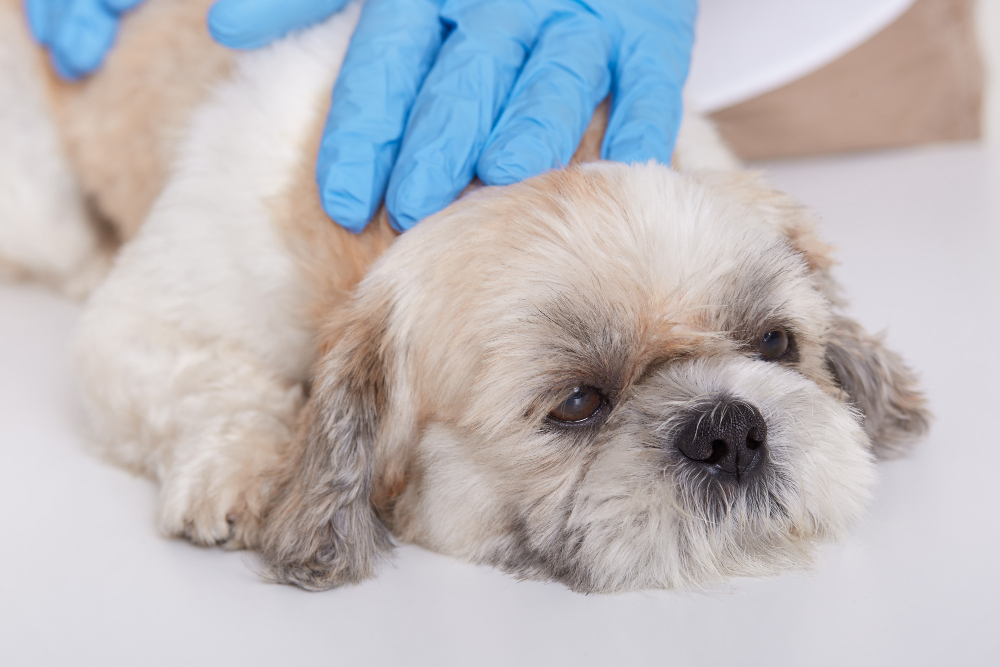
It may indicate an underlying issue if your dog constantly licks or chews their paws.
Here are some common reasons why your dog's feet may be the problem.
Allergies
Dogs with allergies, whether they're caused by food or environmental factors, may develop itchy paws that they lick or chew.
Your veterinarian can help determine the cause of your dog's allergies and provide treatment options.
Injuries or infections
Your dog may be licking or chewing their paws because of a cut, burn, or infection. Check your dog's paws for any signs of injury or infection, and consult your veterinarian for treatment.
Broken, cracked, or ingrown nails
Broken, cracked dog paws or ingrown nails in dogs can be painful and lead to infection if not treated promptly.
If you see broken or cracked nails, trim them with clean, sharp nail clippers. Be sure to avoid cutting the pink part of the nail because it contains blood vessels and nerves.
If the nail is ingrown, soak your dog's paw in warm water and Epsom salt to help reduce swelling and make it easier to remove the nail.
Blisters and burns
Blisters and burns in dogs can be caused by various things, including hot surfaces, chemicals, and friction.
If your dog has a blister or burn, assess the severity of the injury. A minor blister or burn may not require veterinary attention, while a more severe injury may require medical treatment.
If the blister or burn is minor, clean the area with a bar of mild soap and water. Avoid using any harsh chemicals that could irritate the skin.
Dog Grooming Accessories You Need For Healthy Paws
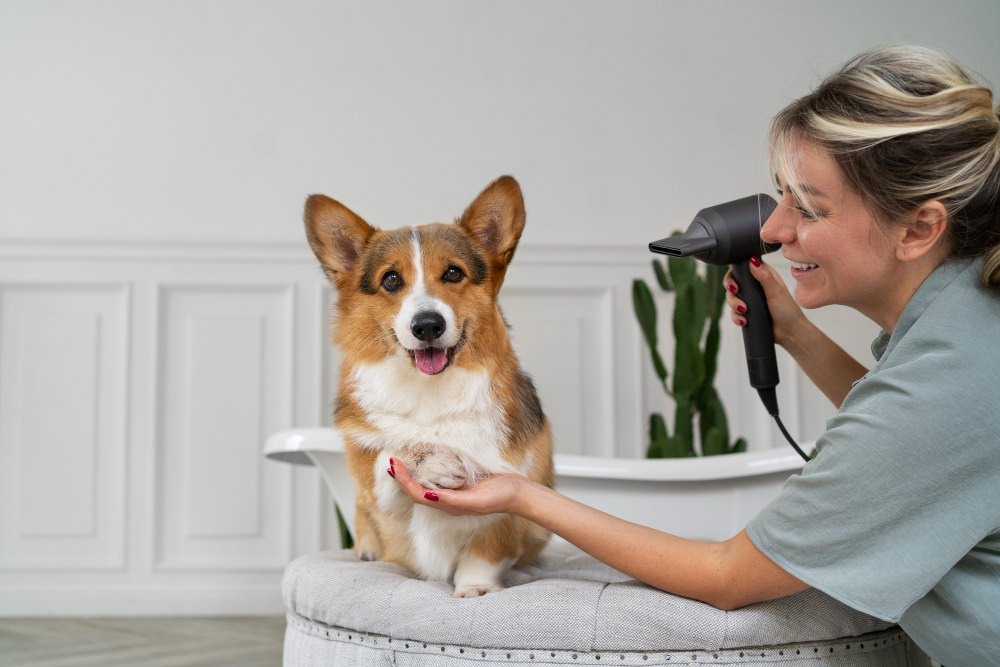
Many pet grooming accessories are available to help keep your dog's coat, nails, feet, rough surfaces, and skin clean.
Here are the most common grooming accessories your dog's canine paws would love to have!
Nail trimmers
It is important to trim your dog's nails. When cutting dog nails, find the exact surface on which to start. Cut nails carefully and stop before you reach the blood vessel. Also, take extra care if your dog's skin is sensitive, leading to dog nail breaks.
Nail clippers
Choosing the correct type of clipper for your dog's pad paws is essential based on size.
Suppose you're unsure about how to clip your dog's nails. In that case, it's a good idea to consult a veterinarian or a professional dog groomer for guidance. They can show you how to clip your dog's nails properly. Plus, they can offer tips to make the process as safe and stress-free as possible for you and your furry friend.
Nail file
A nail file can help smooth rough edges or sharp points on a dog's paw pad nails after clipping. However, it's essential to choose the right type of nail file and to use it carefully to avoid causing discomfort or injury to your dog.
Styptic powder
Styptic powder is an antihemorrhagic agent that stops bleeding from cuts and scrapes. It should not be used as a substitute for proper wound care or medical attention in more severe cases.
Suppose your pet experiences excessive bleeding, deep cuts, or wounds that do not stop bleeding. In that case, it's essential to seek veterinary attention right away.
Groom dog paw hair
To groom a dog's paw pad, carefully use sharp and straight-edged scissors. Avoid pointing them into your dog's paw pad, as it could lead to injury. Trim dog hair slowly and carefully.
Trimming dog paw hair reduces matting and dirt. It also improves dogs' overall hygiene.
Brush dog's hair
Use a good quality comb for dogs to brush the paw pads. This will help remove all tangles.
Clean up
Once done with the trimming, use a damp cloth to wipe your dog's paws clearly.
Final words

It is important to keep your dog's paw pads healthy. Regularly check your dog's paw pads for any signs of injury, such as cuts or abrasions, and seek veterinary care if you notice any issues. Keep your dog's paw pads clean by wiping them with a damp cloth after walks or playtime to remove dirt or debris.
Avoid walking your dog on hot surfaces like asphalt or concrete during hot weather. If you must walk on these surfaces, do so during cooler times of the day and consider using protective booties. Apply a paw balm or wax to your dog's paw pads to help protect them from the elements, especially during cold or dry weather.
Keep your dog's nails trimmed to prevent them from putting pressure on the paw pads and causing discomfort or injury. Provide your dog with a healthy diet and regular exercise to help promote overall health and well-being.
Additionally, seek veterinary care if your pup's paws have issues or discomfort. Stay safe with your pet and have a great day!












